#alberto villa
Photo

Transformers: Mosaic #435 - "Rock 'n' Shock"
Originally posted on November 30th, 2009
Story - Juan Pablo Osorio
Story, Letters - Franco Villa
Art - Alberto Treviño
deviantART | Seibertron | TFW2005 | BotTalk
Later revised and annotated for Transformers: The Lost Seasons
wada sez: This kicks off a three-part Jem and the Holograms crossover story which doubles as a story from The Lost Seasons—because via the character of Hector Ramirez, all these old Hasbro cartoons share a universe. The overarching title’s use of the word “outrageous” comes from the Jem theme song (it’s something of a tagline for the franchise) while the strip’s individual title here is drawn from... a subline imprint or something? Yeah sorry I don’t know jack about Jem, but basically the long and short of it is that this strip basically serves to establish that the supercomputer Synergy is Cybertronian in origin! Gasp! See below for a cover, a preview panel, and the Italian version of the strip.

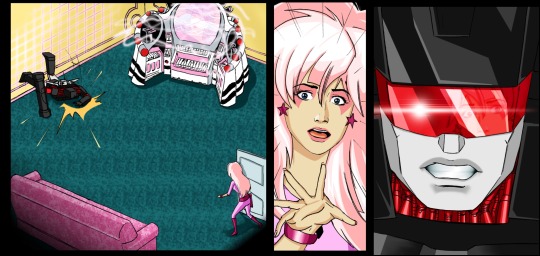

#Transformers#Transformers Mosaic#Maccadam#Sunbow Transformers#Transformers: The Lost Seasons#Juan Pablo Osorio#Franco Villa#Alberto Treviño#Jem#Soundwave#Frenzy#Synergy
32 notes
·
View notes
Text

Jessica Ekomane
© Villa Massimo, 2020
source: facebook
📸: Alberto Novelli
#photography#artist photograpy#Jessica Ekomane#France#Villa Massimo#women in electronic music#photo by Alberto Novelli
13 notes
·
View notes
Text
Burri Alberto coltiva come in vitro, anzi come in lino, […] contrattili anatomie di organismi inespressi, incerti tra una parvenza di materiali biologici fuori uso e un ideale di fulminei universi tra il gigantesco e il minimissimo: una ambiguità spalancata, un desiderio di stringere ricordi di cose che devono chiarirsi; lamentosa cosmogonia supposta con la semplice innocenza di materiali usuali, degli stracci rifiutati dal rione, delle vernici scadenti, delle paste amorfe tra deperimento e cristallizzazione, dei legnami scartati e destinati all’acqua o al fuoco, degli asfalti, delle mucillagini: un mondo di rifiuti popolari può farsi analogo e congeniale alle immaginazioni più imponenti: in un punto qualunque del mondo un occhio vivo e disinteressato come quello che accende la vista di Alberto Burri, può sorprender e trar fuori lo scatto originato da grembi superiori, dove spira esatto il senso di una nostra epopea laica e popolare.
Emilio Villa, Pittura dell’ultimo giorno – Scritti per Alberto Burri
5 notes
·
View notes
Text
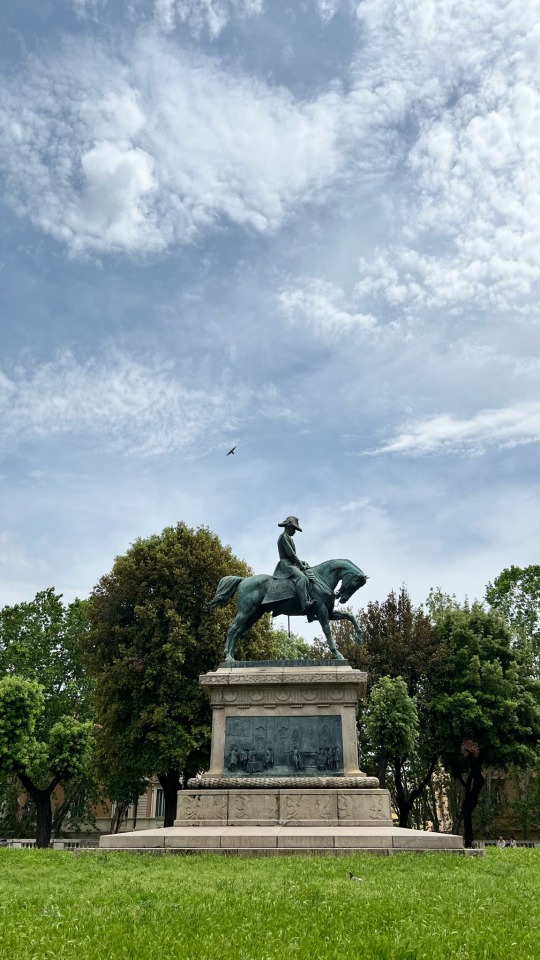
Villa Carlo Alberto Al Quirinale, Roma, Italia 🇮🇹 2023
0 notes
Text
De allá: Exposición "Veo islas", Colectiva

View On WordPress
#Alberto Lescay#Alberto Sautua#Alejandro González#Alexis Leiva Kcho#Alexis Parra#Alicia Leal#Anyelmaidelín Calzadilla#Ángel Ramírez#Carlos del Toro#Danay López#De allá#Donis Llago#Eduardo Roca Salazar Choco#Elio Rodríguez (Macho)#Ernesto Rancaño#Flora Fong#Gabriel Guerra Bianchini#Ibrahim Miranda#Janette Brossard#José Villa Soberón#Juan Moreira#Liang Domínguez#Lidzie Alvisa#Liudmila López#Max Delgado#Nelson Domínguez#Osmeivy Ortega#Osneldo García#Rafael Zarza#Roberto Fabelo
0 notes
Text
¿Impresionante manifestación contra la cuarentena obligatoria?

Noticia del 21/01/2023:
Miles de personas llenaron el centro de Madrid el sábado para protestar contra el gobierno socialista y acusarlo de socavar la Constitución, en una manifestación respaldada por partidos de derecha.
Los manifestantes se concentraron en la Plaza de Cibeles frente al Ayuntamiento, ondearon banderas españolas, pidieron la dimisión del presidente del Gobierno, Pedro Sánchez, y le llamaron “traidor”.
Más de 100 grupos, incluido el opositor conservador Partido Popular, el centroderechista Ciudadanos y el ultraderechista Vox, convocaron la manifestación bajo el lema “Por España, por la democracia y la constitución”.
Los oradores atacaron al gobierno por una serie de políticas y decisiones, que van desde la liberación de los independentistas catalanes hasta sus pactos con los partidos separatistas regionales. Participaron unas 30.000 personas, según estimaciones del gobierno local.
El líder de Vox, Santiago Abascal, el único líder del partido que asistió, dijo a la multitud que el gobierno había “pisoteado la constitución al encerrar a los españoles”, en referencia a los confinamientos por el COVID.
A unos 200 kilómetros de distancia, en la ciudad noroccidental de Valladolid, Sánchez dijo en un mitin socialista que los manifestantes en Madrid defendían una España “uniforme” y, por lo tanto, “discriminatoria”.
En junio de 2021, el gobierno de Sánchez indultó a los nueve líderes encarcelados del intento fallido de independencia de Cataluña de 2017 “en el espíritu del diálogo”. La derecha se opuso a su reciente decisión de sustituir el delito de sedición por un delito menor.
Lo que no cuentan los medios es que el partido VOX... lo que ellos llaman la ultraderecha... logró, en España, declarar el confinamiento obligatorio inconstitucional. Y lo llamó como hay que llamarlo: "la mayor violación de derechos de la historia". Asi que esto tiene mucho que ver con la cuerentena y poco con la derecha por mas que se hagan los giles.
#Alberto Feijóo le está saliendo cara de Casado#Manifestación del Trifachito Nazional en la Villa del Oso y el Madroño#¿La Derecha dice a todo que no#o todo lo contrario según convenga? No a la subida de pensiones...
1 note
·
View note
Text
El presidente Fernández es el padrino de un niño de Berisso
#Sociedad #7movarón | El presidente #AlbertoFernández es el #padrino de un niño de #Berisso
El presidente de la Nación, Alberto Fernández, es el padrino del niño Benicio Filippini, un pequeño de la ciudad Berisso que vive con su mamá, Soledad Villamayor, y sus seis hermanos varones en el barrio Villa Argüello.
El intendente Berisso, Fabián Cagliardi, con la presidente del Correo Argentino, Vanesa Piesciorovski, realizaron la entrega del obsequio de Padrinazgo en representaci��n del Jefe…
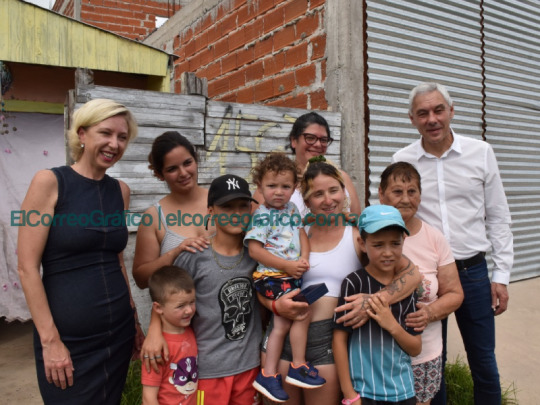
View On WordPress
#Alberto Fernández#Benicio Filippini#Berisso#Correo Argentino#Fabián Cagliardi#Ley N° 20.843#Presidente#Soledad Villamayor#Vanesa Piesciorovski#Villa Argüello
0 notes
Text
emilio villa: "la scrittura della sibilla" (diaforia)
emilio villa: “la scrittura della sibilla” (diaforia)
il file in rete a cura di Daniele Poletti / [dia•foria
https://slowforward.files.wordpress.com/2022/09/emilio_villa_la_scrittura_della_sibilla.pdf
http://www.diaforia.org/floema/files/2014/05/Ebook-Emilio-Villa.pdf
_
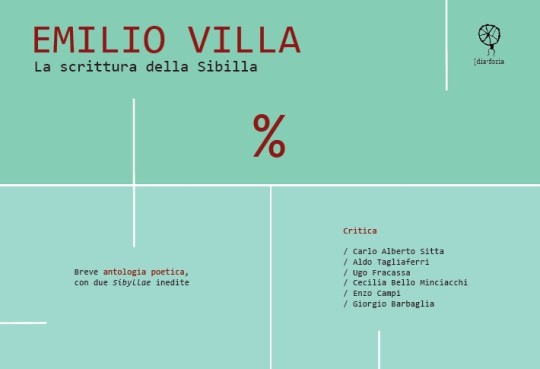
View On WordPress
#Aldo Tagliaferri#antologia poetica#Carlo Alberto Sitta#Cecilia Bello Minciacchi#Daniele Poletti#diaforia#Emilio Villa#Enzo Campi#Giorgio Barbaglia#La scrittura della Sibilla#pdf#Ugo Fracassa#[dia•foria
0 notes
Text
MÚSICA CLÁSSICA BRASILEIRA - 16 GRANDES COMPOSITORES E SUAS OBRAS
MÚSICA CLÁSSICA BRASILEIRA – 16 GRANDES COMPOSITORES E SUAS OBRAS
Engana-se quem pensa que o Brasil ofereceu ao mundo apenas MPB, Samba e Bossa Nova. Já são ao menos 4 séculos de produção artística. Desde a colonização, o número de compositores de música clássica brasileira apenas aumentou. Internacionalmente, os brasileiros já faziam sucesso no mundo dos concertos há muito tempo.
O que você vai encontrar neste artigo?
O que é a música erudita…

View On WordPress
#alberto nepomuceno#alberto neponuceno#bachianas#bachianas brasileiras#brazilian classical music#brazilian music#carlos gomes#césar guerra peixe#chiquinha gonzaga#d.pedro I#heitor villa-lobos#henrique oswald#mozart camargo guarnieri#musica brasileira#musica classica#musica classica brasileira#Padre José Maurício Nunes Garcia; D. Pedro I; Carlos Gomes; Henrique Oswald; Alberto Nepomuceno; Heitor Villa-Lobos; Mozart Camargo Guarnier#tom jobim#villa lobos#villa-lobos
0 notes
Text
La coscienza del luogo
appunti sul tragitto #3
Alberto Magnaghi è architetto, urbanista e Professore emerito di Pianificazione Territoriale presso il Dipartimento di Architettura dell’Università di Firenze, dove ha fondato il Laboratorio di Progettazione Ecologica degli Insediamenti, laboratorio di ricerca che raggruppa docenti, ricercatori, collaboratori, laureati, laureandi, dottori, dottorandi e studenti in forme mobili di discussione e di lavoro comune.[1] I suoi studi sul territorio lo hanno portato alla fondazione della Scuola Territorialista italiana, approccio contemporaneo alla pianificazione e al design urbani e regionali oggi condivisi dai cosiddetti Territorialisti, teorici e studiosi impegnati nella formulazione di nuovi modelli per affrontare il problema ecologico, che condividono una critica alla nozione tradizionale di sviluppo sostenibile e concentrano l’attenzione sulla necessità di un ritorno a una prospettiva locale. Nell’analisi storica dello sviluppo del concetto di territorio, alla ricerca delle cause e delle condizioni che hanno generato l’ odierna crisi ecologica, Magnaghi spiega come prima dell’avvento della modernità meccanizzata il territorio fosse individuabile come “l’ambiente dell’uomo”, un terzo elemento prodotto dalla co-presenza e co-evoluzione della natura insieme agli insediamenti umani.
Nel libro Il principio territoriale, il teorico analizza come la situazione di distacco degli abitanti dal proprio territorio caratteristica della modernità sia sintomo di una più generale trasformazione di questi in lavoratori, clienti e consumatori atomizzati, messa in atto e perpetuata negli anni dai sistemi socio-economici e tecno-finanziari globali.[2] La società capitalistica moderna, basata sull’avanzata tecnico-scientifica e fatta di reti globali e realtà dislocate ha strutturato una nuova concezione di territorio come sito inanimato, semplice spazio vuoto su cui adagiare i meccanismi della civiltà delle macchine. La civilizzazione moderna ha preteso di svilupparsi a prescindere dall’ambiente naturale, interrompendo il processo di co-evoluzione tra uomo e natura per instaurare una dinamica di dominio e controllo del primo sulla seconda.

Quello che è il risultato di un processo di stratificazione lungo tutta la storia, denso di saperi, conoscenze e memorie è stato quindi concettualmente svuotato e strumentalizzato ai fini produttivi. In questo modo, con l’abbandono del concetto di territorio come ambiente di cui l’uomo è parte, l’azione sulla natura è stata rivolta al dominio e al controllo e ha generato enormi danni per entrambe le parti coinvolte: l’ambiente e l’umanità. Constatato che il sistema in cui abbiamo investito e su cui pensavamo di poter fare affidamento non è sostenibile e ha inoltre fallito nella promessa di un miglioramento del lavoro e della vita per tutti, si rende evidente la necessità di nuove forme di progettazione e organizzazione, in grado di rimettere al centro i bisogni dell’ecosistema territorio ripartendo dai valori base della comunità. Risanare il rapporto tra abitanti e spazi abitati significa recuperare i saperi contestuali del vivere e riconoscere le identità dei luoghi, espresse nei loro paesaggi. In quest’ottica si rende necessaria anche una nuova narrazione degli stessi abitanti contemporanei che devono diventare costruttori dei patrimoni locali attraverso il recupero del rapporto con il territorio, in senso individuale e comunitario. Questo è possibile attraverso un cambio di prospettiva, per cui gli abitanti tornino ad avere cura del territorio e ad impegnarsi quotidianamente nel rapporto con esso, considerando il luogo come bene patrimoniale comune.
La struttura capitalistica della società e la conseguente disgregazione delle forme di solidarietà sociale e di classe hanno generato da tempo risposte oppositive, nella forma di mobilitazioni globali contro le azioni dannose e in favore di modalità più consapevoli di progresso. La globalizzazione ha fatto inevitabilmente riemergere la dimensione locale, in cui si attivano modalità di mutuo soccorso e la crescita di coscienza del luogo collettiva e individuale. Lo studioso riconosce l’esistenza in Italia di varie forme di organizzazione sociale basate sulla partecipazione, sulla valorizzazione attiva del patrimonio territoriale realizzata attraverso la collaborazione:
La produzione sociale del territorio e del paesaggio, attraverso la partecipazione collettiva alla produzione di un patrimonio vivente deve promuovere un processo che sappia sottrarre il patrimonio storico e paesaggistico alla sua funzione museale e mercantile verso una sua riappropriazione e qualificazione attiva come bene comune per l’elevazione della qualità della vita, dell’ambiente e dei paesaggi contemporanei.
A questo fine diventa fondamentale che gli abitanti dei territori riprendano consapevolezza di saperi, identità, culture accumulate nei tempi lunghi della storia e si ridefiniscano attraverso l’appropriazione di questa mole di conoscenze, costruendo una propria “coscienza del luogo”. Ed è a mio parere in questo snodo che si evidenzia la rilevanza del contributo che l’arte contemporanea può fornire all’interno di un più ampio progetto di riterritorializzazione. Attraverso le pratiche partecipative non convenzionali, le forme di residenza artistica context specific e le altre varie forme che la progettualità artistica assume oggi, si apre la possibilità di creare situazioni specifiche per gli abitanti dei singoli territori e costruire spazi di prossimità, in cui riattivare le relazioni e generare reti dal basso. Il ritorno al territorio si concretizza in un contro-esodo verso le zone marginali, rimaste escluse dai processi di agglomerazione urbana.
[1] http://www.lapei.it/
[2] Alberto Magnaghi, Il principio territoriale, Bollati Boringhieri, 2020
#arte contemporanea#pratiche territoriali#alberto magnaghi#villa d'ogna#territorio#coscienza del luogo#contemporaneo
1 note
·
View note
Photo

Transformers: Mosaic #437 - "Gimme A Gimmick"
Originally posted on December 7th, 2009
Story - Juan Pablo Osorio
Story, Letters - Franco Villa
Art - Alberto Treviño
deviantART | Seibertron | TFW2005 | BotTalk
Later revised and annotated for Transformers: The Lost Seasons
wada sez: The title of this strip is taken from a song by The Misfits. Emmett is the inventor of Synergy—except no he’s not, it’s a piece of Autobot tech! The first panel here flashes back to the third season of Beast Wars. “Auger” was the codename (read: catchy trademark) for Dr. Edward “The Fist” Augutter from Inhumanoids. Italian version below the break.
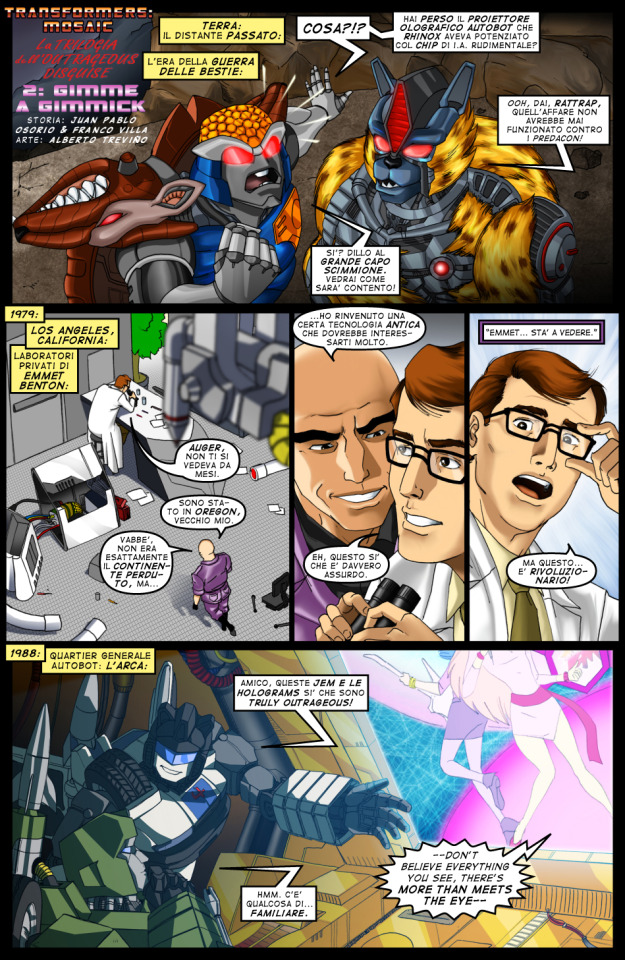
#Transformers#Transformers Mosaic#Maccadam#Sunbow Transformers#Transformers: The Lost Seasons#Juan Pablo Osorio#Franco Villa#Alberto Treviño#Jem#Aja#Rattrap#Cheetor#Emmett Benton#Auger#Hound#Jazz
23 notes
·
View notes
Text
COOL ZOOLOGY STORIES OF 2023
Happy New Year! At the start of 2022 I put together a list of some cool zoology-related news stories from 2021, and after... kind of forgetting to put a list together for 2022, I wanted to do the same for 2023. Here are some of my favourite animal-related news stories from the past year (plus one plant-related story, as a treat.)
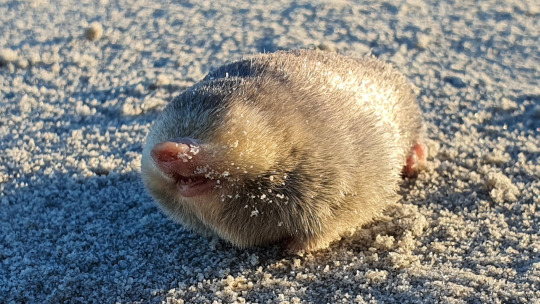
An elusive little mammal was spotted for the first time in nearly a century
Species Concerned: De Winton's Golden Mole (Cryptochloris wintoni)
Family: Golden Mole Family (Chrysochloridae)
Source(s): here and here
A small, superficially mole-like animal seemingly found only in the area around Port Nolloth, South Africa, De Winton’s Golden Mole has long been feared to be extinct due to a total lack of confirmed sightings since 1937. This changed in November of 2023, when (after years of extensive searching) a De Winton’s Golden Mole was found alive for the first time in 87 years, and was photographed for the first time ever.
Though similar to moles in both appearance and behaviour, golden moles are actually part of a separate and only distantly related group of mammals known as Afrosoricidans (alongside tenrecs and otter shrews) that have independently developed mole-like bodies to exploit a similar ecological niche – with massive, shovel-like front paws, short limbs, protective “shields” of toughened skin on their heads and non-functional eyes covered by skin to protect them from irritation, members of this family are adapted to burrowing, and in most cases will spend their entire lives underground unless disturbed. Due to the scarcity of sightings very little is known about the biology of De Winton’s Golden Mole, but based on its sandy coastal habitat and the behaviours of its closest relative, the Van Zyl’s Golden Mole (Cryptochloris zyli) it is likely that members of this species live solitary lives and use their digging abilities to “swim” through sand, preying on insects and small vertebrates which they detect using unique structures in their inner ears that are highly sensitive to vibration.
In addition to conventional habitat surveys within De Winton’s Golden Mole’s presumed range, the team responsible for this species’ rediscovery also utilized several newer or more unusual strategies to search for their focal missing mammal, including thermal imaging to detect underground body heat and the testing of soil and sand in the area for eDNA (tiny amounts of genetic material that organisms leave in water, soil and on other surfaces, giving insight into which species are found in an area without having to actually spot them.)
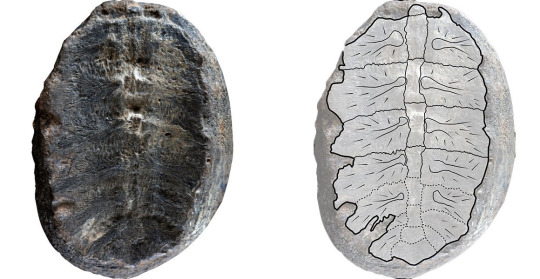
An "ancient plant" turned out to be a baby turtle
Species Concerned: "Turtwig" Cretaceous Turtle
Family: Unknown
Source(s): Here and Here
In 2003, a priest and fossil collector named Gustavo Huertas identified what he believed to be the fossilised remains of a tiny plant of the extinct genus Sphenophyllum in cretaceous-era rocks near Villa de Leyva, Columbia, and named the new species Sphenophyllum colombianum. Huertas' find was unusual in that it dated to the early Cretaceous period (making it over 100 million years younger than other Sphenophyllum species, the last of which are believed to have gone extinct in the late Triassic period,) and it was the fossil's unusual age that drew the attention of Fabiany Herrera, a curator of plant fossils at the Field Museum of Natural History in Chicago, USA and Héctor Palma-Castro, his student. After taking an interest in the fossil the two travelled to the Universidad Nacional de Colombia in Bogotá, Columbia where the fossil was held in order to inspect it, and after realising that its features were unlike other Sphenophyllum species and consulting a vertebrate palaeontologist, Edwin-Alberto Cadena, they eventually came to realise that what Huertas had found was not a Sphenophyllum species, or event a plant - what had originally been interpreted as the stems and leaves of a plant were actually the ribs of a very small, and likely very young, prehistoric turtle.
The ribs of turtles are located on the upper surface of their shells, where they form a sort of "roof" that strengthens the shell's outer carapace. Newly hatched turtles have fragile bones and shells that are easily broken beyond recognition during fossilization, so finding the well-preserved remains of a young turtle (estimated to be less than 1 year old when its bones were buried) is very rare. The discovery of the true identity of "Sphenophyllum colombianum" was published (here) in early December 2023, and as such the newly discovered turtle fossil has yet to be given a new name. Instead, it has been affectionately dubbed "Turtwig", after the half-plant-half-turtle gen 4 starter Pokemon, until it can be formally reclassified.
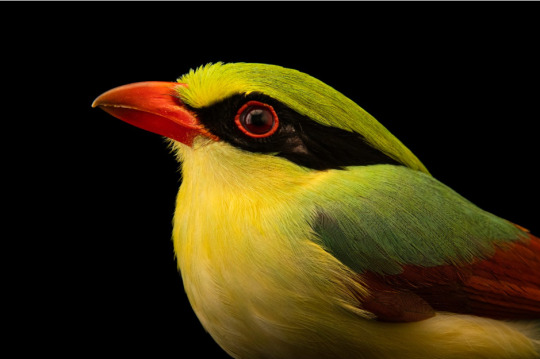
The Indochinese Green Magpie became the Photo Ark's 14,000th species
Species Concerned: Indochinese Green Magpie (Cissa hypoleuca)
Family: Crow Family (Corvidae)
Source: Here
The National Geographic Photo Ark is an ambitious project led by Canadian photographer Joel Sartore which aims to photograph every species held in captivity worldwide, providing high-quality images of often relatively obscure species and raising awareness of each species involved. In 2021 the Arabian Cobra became the 12,000th species added to the ark, in 2022 the Spoon-Billed Sandpiper became the 13,000th, and as of May 2023 the Indochinese Green Magpie has become the 14,000th species Sartore and his team have photographed.
Unlike the vast majority of crow species, the 4 species in the genus Cissa, known collectively as green magpies, are brightly coloured, largely carnivorous birds with vivid green feathers and bright red beaks and feet which are thought to aid them in camouflaging against the leaves and bark of the dense, humid forests they typically inhabit. The Indochinese Green Magpie, which is found in densely forested areas from central China to southern Cambodia, is one of the most common green magpie species, but is still believed to be experiencing a decline in population size due to the intense demand for members of this species in the illegal wildlife trade, both for their feathers and to be kept as illegal pets. The model for Sartore's photo, a female named Jolie, was herself found in a suitcase that was intercepted while being smuggled through the Los Angeles International Airport, and is now kept Los Angeles Zoo and Botanical Gardens. The team behind the Photo Ark have expressed hopes that Jolie's picture and story will help to raise awareness of the harmful effects of the illegal exotic pet trade and its prominence within the USA. On a happier note, the photo also seems to show that Jolie is now doing well - green magpies kept in captivity have been known to sometimes take on a duller colouration due to a lack of carotenoids in their diet, so her natural green feathers are an indicator of good health.

A very rare, very weird plant was rediscovered after 30 years
Species Concerned: Thismia kobensis
Family: Burmannia Family (Burmanniaceae)
Source(s): Here, here and here
In 1992, a bizarre-looking plant was found growing near the city of Kobe in Japan; pale and partially transparent without any leaves or chlorophyll, it was a member of the genus Thismia and was notable for being found further north than any other Asian species in the genus to date. A single plant was collected and taken to the Museum of Nature and Human Activities in the nearby city of Sanda, and in 2018 extensive examination of this single preserved plant led to it being determined to be a previously undocumented species, Thismia kobensis. This discovery led to surveys being dispatched to the area where the species was originally discovered in hopes of gathering additional samples and learning more about T. kobensis in the wild, but after surveys of the area were unable to find any remaining individuals, and following the discovery that the site from which the original sample had been collected had been converted into an industrial complex since the 1990s, the species was feared to have gone extinct. In February of 2023, a team of researchers led by Kobe University's Professor Kenji Suetsugu announced the first documented sighting of Thismia kobensis in 31 years, having found a small population growing in Sanda, not far from the museum that holds what had long been the only known specimen of the species and roughly 30km (18.6 miles) from the site at which the species was originally discovered. Their publication can be read here.
Thismia species, also known as fairy lanterns, are almost alien-looking plants that, as mentioned previously, lack chlorophyll and do not carry out photosynthesis, instead gaining nutrients parasitically by connecting their roots to the hyphae of typically mutualistic fungi and extracting nutrients from both the fungus itself and from any other plants that it has connected to (making it a mycoheteroph, much like the slightly better-known ghost plant/ghost pipes.) This unusual lifestyle likely developed as an adaptation to allow members of this genus to survive in forests with dense canopies that block out sunlight, but also makes them highly sensitive to environmental change - in order for an area to support a healthy population of Thismia kobensis, it must also support healthy trees and healthy soil fungi. As the original preserved 1992 specimen of T. kobensis was long dead and slightly damaged, its rediscovery also allowed Suetsugu's team to further study the species, leading to a surprising conclusion - genetically and anatomically, Thismia kobensis seems to have more in common with Thismia americana (the only known North American species of Thismia, which was last sighted in 1916 and is similarly feared extinct) than to any other Asian Thismia, possibly suggesting that T. kobensis and T. americana are descended from common ancestors that spread either from Asia to the Americas or vice versa during a time when their ranges were connected by a land bridge.
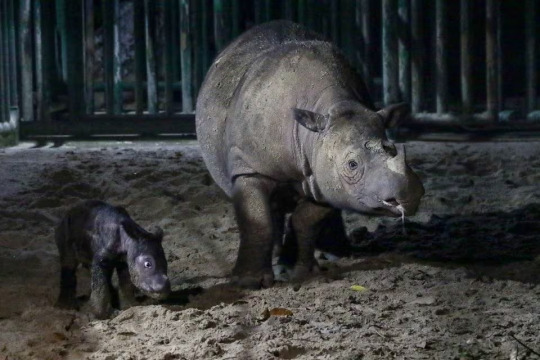
Important progress was made in saving the Sumatran Rhinoceros
Species Concerned: Sumatran Rhinoceros (Dicerorhinus sumatrensis)
Family: Rhinoceros Family (Rhinocerotidae)
Sources: Here and here
Distinguished from the other 4 rhinoceros species by its relatively small size, 2 horns and short black fur (which is barely present in adults, but very prominent in calves) the Sumatran Rhinoceros is one of the rarest mammals on earth, with an estimated population size of roughly 30-80 individuals. Having had its numbers drastically reduced by poaching, habitat loss and extreme weather events, the species is now threatened by its own small population size - found only in tiny scattered populations across Sumatra and Borneo, it is now extremely difficult for wild members of this species to find mates, and where mating does occur such a small population size considerably limits genetic diversity, increasing the risk of calves being born with health complications. To combat this numerous efforts to breed Sumatran Rhinoceroses in captivity have been developed, and as of November of 2023 the results have been promising; last year saw the birth of 2 Sumatran Rhinoceros calves at the Way Kambas National Park in Lampung, Sumatra.
The youngest of 2023's calves, a male, is the son of a female named Delilah who was herself the second calf to have ever been born at the park's Sumatran Rhinoceros Sanctuary (a site where members of this species are cared for and protected from illegal poaching while breeding.) This marks the first-ever instance of a captive-born Sumatran Rhinoceros giving birth, and therefore represents a key step in establishing a healthy captive breeding population of Sumatran Rhinoceroses to help preserve and increase the genetic diversity of wild populations. The calf's father, named Harapan, was born in Cincinnati Zoo in the USA, and it is hoped that the careful incorporation of the handful of Sumatran Rhinoceroses held in zoos into wild breeding programs can further help to increase the species' genetic diversity in the future. While extensive action is still needed for the Sumatran Rhinoceros to be saved, the park's work this year represents a significant step towards the species' conservation.
--------------------------------------------
Have a great new year!
#Happy new year!#2023#2024#zoology#biology#mammalogy#paleontology#botany#ornithology#conservation#animal#animals#plant#plants#wildlife#turtwig#de winton's golden mole#golden mole#golden moles#Indochinese green magpie#green magpie#green magpies#Thismia kobensis#Thismia#Sumatran rhinoceros#rhinoceros#rhinoceroses
33 notes
·
View notes
Text
Film italiani in uscita a ottobre
Nata per te (Fabio Mollo): 05/10
Luca è single, gay, cattolico, dedito al volontariato e con un grande desiderio di paternità. Alba è una neonata con sindrome di Down che è stata abbandonata in ospedale subito dopo il parto. Mentre la sua infermiera le dedica ogni tipo di cura, il tribunale di Napoli è alla ricerca di una famiglia che possa occuparsi di lei. Luca si propone per ottenerne l'affidamento, ma è single ed è omosessuale. Ad aiutarlo ci penserà un'avvocata agguerrita, esperta tanto di legge quanto di umanità.
Volevo un figlio maschio (Neri Parenti): 05/10
Alberto è un marito e un padre felice. Ha però un cruccio: avere solo figlie femmine. Il film racconta la storia di Alberto che, grazie a una magia, si ritrova improvvisamente padre di quattro figli maschi.
Phobia (Antonio Abbate): 05/10
Dopo aver abbandonato da anni il casale di famiglia, Chiara torna dalla sua famiglia insieme a Michela, una sua amica. Nel passato di Chiara c'è un trauma non superato: si sente responsabile di un incendio alla stalla avvenuto quand'era bambina e che ha ridotto permanentemente a letto, collegato alla bombola dell'ossigeno, il padre. Tutti sono pieni di rancore. Quando nel cuore della notte Chiara si sveglia, Michela non c'è più e sono scomparse anche le sue cose. Chiara si alza e chiede ai familiari se l'hanno vista, ma questi sostengono che non esiste: Chiara è venuta da sola. Chiara, sconcertata e preoccupata, precipita così in un mistero inatteso e intricato.
La fortuna è in un altro biscotto (Marco Placanica): 06/10
In una città portuale di provincia Leo ha un piccolo negozio di oggettistica e modesto antiquariato. Le cose non gli vanno bene, e si fa sempre più presente la minaccia di uno strozzino. Leo è disposto a tutto, per evitare lo strozzino, con una tanica di benzina e con l'aiuto di un ragazzo cinese, trasforma il suo negozio in un cumulo di cenere. È disposto anche a rubare. A rubare un quadro di valore: la tela di un esponente delle avanguardie del Novecento. Il quadro si trova nella villa di un facoltoso imprenditore, collezionista d'arte, aspirante sindaco nella lista "Famiglia Unita". Destino vuole che il figlio dell'imprenditore e la figlia dello strozzino abbiano una relazione..
Il vuoto (Giovanni Carpanzano): 06/10
Giorgio e Marco vengono da due mondi diversi: il primo è il figlio di un avvocato affermato, il secondo di un agricoltore, lotta per emanciparsi dalla periferia di una città del profondo sud. Entrambi sognano un amore travolgente e soprattutto, per motivi diversi, brucia- no dalla voglia di emergere. La forza che li ha attratti li costringerà a combattere per stare insieme. Il 'vuoto' che li spinge l'uno verso l'altro porterà i protagonisti ad inseguirsi, camminando in bilico proprio sul vuoto che li attrae: due ragazzi e un sentimento inaspettato
La luna sott'acqua (Alessandro Negrini): 09/10
Un visionario affresco nel tempo dalle atmosfere oniriche a Erto, paese devastato dalla tragedia del Vajont, diviso tra il desiderio di rinascita e il bisogno di preservare la memoria di un passato doloroso. Un ritratto onirico che oscilla tra realtà e sogno e sul crinale di una domanda: qual è il confine tra il preservare la propria memoria e la necessità di sopravvivere al dolore e ritrovare una speranza?
Doppio passo (Lorenzo Borghini): 12/10
Dopo che la Carrarese Calcio è stata promossa in serie B con cinque giornate di anticipo, il suo storico capitano Claudio Russo decide di esaudire uno dei più grandi desideri della sua vita e apre un ristorante con sua moglie Gloria grazie anche al prestito del suo amico Sandro Costa. La fortuna però gli volta improvvisamente le spalle. Cerca di arrangiarsi come può finendo per accettare di andare a lavorare nella cava. Ma i soldi guadagnati non bastano, il suo matrimonio va in crisi e la sua vita, di conseguenza, si trasforma in un inferno. Per provare a uscirne fuori, dovrà mettere in discussione la sua integrità morale.
Gli ospiti (Svevo Moltrasio): 12/10
Un casale sparso in mezzo al verde, nove amici che si conoscono da una vita, un bambino che dorme. Poi si accorgono di un intruso, tale Marco. Ma Marco dice che quella è casa sua, anzi, che la sta vendendo e per questo ha lasciato la porta d’ingresso aperta. Il film è una black comedy esclusivamente finanziata grazie a una campagna di crowdfunding.
L'ultima volta che siamo stati bambini (Claudio Bisio): 12/10
Vanda, Italo, Cosimo hanno dieci anni e, nonostante la Seconda guerra mondiale, conoscono ancora il piacere del gioco che condividono con l'amico Riccardo che è ebreo. Il giorno in cui scompare decidono che non si può attendere: i tedeschi, che devono averlo portato via con un treno, debbono essere resi consapevoli del fatto che il loro amico non ha alcuna colpa per cui essere punito. Si mettono quindi in marcia seguendo la strada ferrata. A cercare di raggiungerli ci sono il fratello Vittorio, milite fascista che ha subìto una ferita, e la suora dell'Istituto per gli orfani che ospita Vanda.
Me contro te - Vacanze in Transilvania (Gianluca Leuzzi): 19/10
Nel laboratorio ormai abbandonato del Signor S., Viperiana, Perfidia e la banda dei Malefici stanno tramando un piano malvagio per distruggere i Me Contro Te e il mondo intero: oscurare il Sole con il prezioso diamante delle paure e rendere la Terra un posto buio e desolato. Ma il diamante è nascosto nel posto più spaventoso del Pianeta: il Castello del Conte Dracula in Transilvania! Sofì, Luì, Chicco, Tara e Ajar partono così per la Transilvania, mentre il Signor S. si mette sulle tracce dei Malefici. Qui i nostri amici dovranno vedersela con il Conte Dracula in persona, il suo fedele servitore Patumièr, e sua figlia Ombra. Attraverso passaggi segreti, quadri parlanti e nuovi amori, il gruppo di amici imparerà ad affrontare le proprie paure e realizzerà che le diversità sono un valore e non un limite e non bisogna temerle"
Un weekend particolare (Gianni Ciuffini): 19/10
Elena e Claudio si rincontrano a Malta nello stesso hotel in cui era finita la loro burrascosa storia d'amore. Sarà questo incontro inaspettato a far rinascere in loro la voglia di rivalsa dell'una sull'altro ma anche, forse, il desiderio di recuperare qualcosa che entrambi sentono di avere perduto. Tra sorprese, colpi di scena e combattivi pretendenti che non si danno per vinti, riuscirà la magia dell'isola a riannodare i fili strappati del loro amore?
Mi fanno male i capelli (Roberta Torre): 20/10
Una bella signora bionda sulla spiaggia, orme, onde, lei che raccoglie qualcosa dalla sabbia. Poi si avvicina a un ragazzo e gli dice di essersi perduta. Da una casa vicina un uomo la osserva: Monica sta perdendo la memoria, Edoardo, il marito, la accompagna con tenerezza nelle vite che lei si ricostruisce attraverso i film di Monica Vitti. Antonioni, Michele Placido, Alberto Sordi, con il quale lei dialoga attraverso uno specchio, abiti, cappelli, sentimenti, sperdimenti.
Holiday (Edoardo Gabbriellini): 23/10
Veronica, dopo un lungo processo e due anni di prigione per l'omicidio della madre e del suo amante, viene riconosciuta innocente. Ha solo vent'anni e tutta la vita davanti, ma è difficile guardare al futuro quando gli occhi di tutti sono ancora rivolti a quel tragico evento. Attraverso i ricordi suoi e della migliore amica Giada, riavvolgeremo il nastro di una storia che più avanza, più si fa ambigua.
C'è ancora domani (Paola Cortellesi): 26/10
Paola Cortellesi fa il suo esordio alla regia con un originale dramedy in bianco e nero ambientato nel Secondo Dopoguerra.
Comandante (Edoardo De Angelis): 31/10
La storia di Salvatore Todaro, comandante di sommergibili della Regia Marina che durante la Seconda Guerra Mondiale contravvenne agli ordini del suo comando per portare in salvo i 26 uomini che avevano provato ad affondarlo.
Documentari
La strada infinita (Alberto Valtellina, Paolo Vitali): 03/10
Una mappatura delle "eterotopie" che insistono su un importante asse viario di una città italiana.
Gorgona (Antonio Tibaldi): 06/10
Un sguardo sull'isola-carcere della Gorgona, unico esempio europeo di questo tipo di penitenziario.
Careseekers - In cerca di cura (Teresa Sala, Tiziana Francesca Vaccaro): 09/10
Le persone anziane spesso finiscono con il necessitare di attenzioni e cure particolari. Queste possono provenire da più soggetti: i familiari, le badanti, le strutture definite 'case di riposo' ecc. Il documentario si interroga, grazie alla collaborazione di un gruppo di donne che si occupano da tempo della questione, su quali possano essere le condizioni più favorevoli sia a chi è assistito che a chi assiste. Se l'Italia pensa di poter essere nel prossimo futuro un Paese per vecchi deve ripensare alla proprie modalità di assistenza. Si riuniscono sotto la definizione associativa di "Laboratorio di pensiero e parola" a Fabbrico, cittadina in provincia di Reggio Emilia le donne che si trovano al centro della riflessione che Sala e Vaccaro propongono all'attenzione di chi vedrà questo loro lavoro. Ecco allora, in questa narrazione suddivisa in capitoli, una proposta utopica che però è già stata sottoposta a verifica in un gruppo ristretto
Pasolini - Cronologia di un delitto politico (Paolo Angelini): 16/10
Un film inchiesta alla ricerca della verità politica dell'omicidio di Pier paolo Pasolini
Zucchero Sugar Fornaciari (Valentina Zanella, Giacomo De Stefano): 23/10
Jeff Koons - Un ritratto privato (Pappi Corsicato): 23/10
L'artista che è riuscito a elevare il kitsch e il pop per trasformarli in capolavori come pochi artisti visionari nella storia recente.
10 notes
·
View notes
Photo

I was watching I Love Lucy on Pluto TV last night and it completely slipped my mind that yesterday marked Desi Arnaz’s 106th birthday.
His was a classic Riches-to-Rags, Rags-to-Riches Cinderella tale. Desiderio Alberto ‘Desi’ Arnaz y de Acha III was born 2 March 1917 in Santiago de Cuba, Oriente Province, Cuba, the only son of wealthy landowner Desiderio Alberto Arnaz y de Alberni II (a prominent Cuban politician, who, to date, was the youngest mayor of Santiago de Cuba from 1923 to 1932) and his wife, Dolores ‘Lolita’ de Acha y de Socías (one of the most beautiful women in the Caribbean, the daughter of a businessman, one of three founders of Bacardi Rum Limited, the world's largest privately-owned spirits company). Desi was of the small but vastly privileged, upper-class y de Acha, the descendent of Cuban nobility of whose colonial ancestors originated from Santander, Provincia de Cantabria, Cantabria, Spain. (His grandfather, Dr Desiderio Alberto Arnaz y Alberni I, was assigned to the first United States volunteer cavalry in Cuba, the ‘Rough Riders’ under the leadership of ‘Hero of Cuba’ Theodore Roosevelt during the Spanish-American War on 1 July 1898. To legend, they sieged San Juan Hill on horseback, and though the forged conquest did not belong primarily to Roosevelt, for the conflict was an integrated effort between the white volunteer regiment and the 1,250 black Buffalo Soldiers, the famed battle gained Cuba her independence from Spain—a victory for the people, the Cuban people).
At the height of the Cuban Revolution of 1933, Desi and his family were forced to flee their Motherland, leaving their riches behind. Following a brief election, the government collapsed with the removal of President Gerardo Machado y Morales from office in August of 1933. The opposing anarchists seized all political leaders and stripped them of their power. Among them, Desi’s father, imprisoned by the regime, before his brother-in-law, Alberto de Acha, intervened on his behalf, thus making his escape to Miami, where he was to remain in exile. Having lost their holdings to the rebels who confiscated their property (their palatial home, a cattle ranch, two dairy farms, and a vacation villa on a private island in Santiago Bay), his father sent for Desi and his mother, who took refuge in Key West, Monroe, Florida in 1934. When Desi washed upon the shores of the Americas, his father had established an import-export company, where the family of three took up frugal lodgings in the company warehouse and dined on cans of cold beans. Desi came to live in New York City and Los Angeles for about one year, where he tightened his belt for survival and scrambled for employment as a struggling musician. Following an engagement as a guitar player for a Latin-American band at the Roney Plaza Hotel in Miami Beach, and a cursory stint with the Xavier Cugat Orchestra in 1937, he made his Broadway debut in the Rodgers and Hart musical Too Many Girls, where he reprised the role for RKO's major motion picture of the same name in 1940. During the course of filming, he fell head-over-heels for the Apricot Queen, Lucille Désirée Ball. The couple eloped on 30 November 1940 in Greenwich, Fairfield, Connecticut. By 1949, at the age of thirty-two, Desi established himself a renowned nightclub entertainer as conga-playing band leader for the travelling self-titled Cuban orchestra.
Most Hollywood buffs would do well to remember the Power Couple formed by Desilu Productions—a celluloid empire built on the backs of Lucy and Desi’s American Dreams, despite the public scandals and tumultuous marital woes. But at the crowning glory of their golden existence, there are those who neglect Desi's legacy and his reluctant resignation to his fate as the Man Behind the Curtain, to remain in Lucy’s shadow so long as he lived. Lucy, of whose celebrity distinction was of higher standing than her husband’s. Desi, though undoubtedly talented, who was not exempt from the unjust ostracization and societal prejudice that plagued him as a Cuban Spaniard immigrant in racially-charged Hollywood. For those who clutched their pearls at the prospect of Middle American households who might've dismissed acceptance of the world’s first interracial couple on television, Lucy and Desi defied those expectations and dissolved racial barriers in an era dominated by cultural strife. Audiences of all races, colour, and creed came together to shower the Ricardos with adoration and praise, because they came to understand the Ricardos epitomized the human experience, no matter that they didn't reflect the typical post-war domestic demographic. Against all odds, the world fell in love with the All-American Ricardos… white, Hispanic, or otherwise. Lucy and Desi, to be envied by all... America's Sweethearts.
On his 106th birthday, we remember Desi for the pioneer he was, as the Mastermind behind the nation’s most Beloved Redhead.
Behind every great woman lies a greater man.
Perhaps Desi speaks for us all when he declared his everlasting love, in his own words... ‘I Love Lucy was never just a title.’
💓 Happy Heavenly Birthday, Desi. 💓
𓆩♡𓆪 · ・ 𓆩♡𓆪 · ・ 𓆩♡𓆪 · ・𓆩♡𓆪 · ・ 𓆩♡𓆪 · ・
#my edit#classic television#old hollywood#1950s#I Love Lucy#p: desi arnaz#p: lucille ball#happy heavenly birthday
39 notes
·
View notes
Text
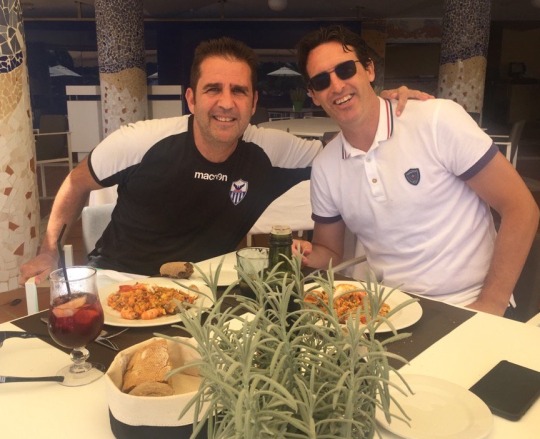

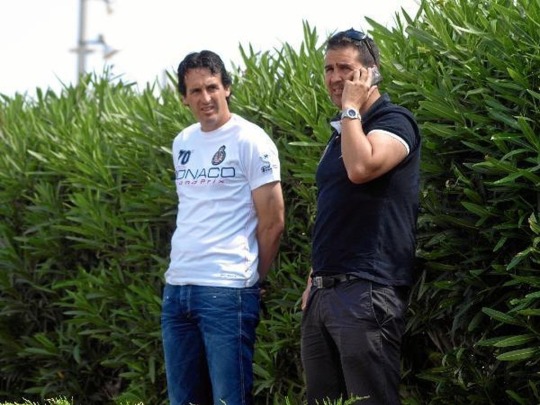

Unai with his longtime friend (and Villa scout) Alberto Benito ♥️
Some thoughts:
I love how he has old, close friends in his team, but not in a cronyism way, he just happens to have connected closely with good football folk.
I’m getting ‘Homer backing into the hedge’ vibes in the third. That t shirt fit though 😮💨
The last one at Zrinjski 😍
#unai emery#football friends#they were roommates and are still friends so neither could have been that bad of a roommate lol
6 notes
·
View notes
Text
Exposición “Fabulaciones de la piedra a la PC”, Colectiva
Exposición “Fabulaciones de la piedra a la PC”, Colectiva
Exposición Fabulaciones de la piedra a la PC
Colectiva
18.02.2022
Galería de Arte “Collage Habana”
“esto es aquello”
Arístoteles
Poco espacio libre ha quedado en Collage Habana. La tridimensionalidad de las piezas hoy expuestas ha robado protagonismo a los tradicionales soportes de lienzos y fotografías. El recurso curatorial seleccionado para esta ocasión, va de presentar la vigencia de…

View On WordPress
#2022#Alberto Domínguez#Aramís Justiz#Duniel Alemán#Duvier del Dago#Eduardo Roca Salazar Choco#Fernando Velázquez#Frank González#Gabriel Raúl Cisneros Báez#Galería Collage Habana#José Emilio Fuentes (Jeff)#José Villa Soberón#Juan Quintanilla#Lidia Aguilera#Lisandra Ramírez#Marcos Luis Rey Pérez#Mario Vega#Miguel Osorio#Muestra Colectiva#Osneldo García#Pedro Luis Cuellar#Pedro Pablo Oliva#Rafael Consuegra#Rafael Pérez Alonso#The Merger#Yeinier Núñez
0 notes